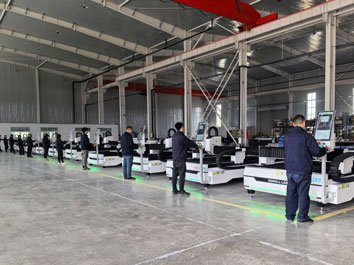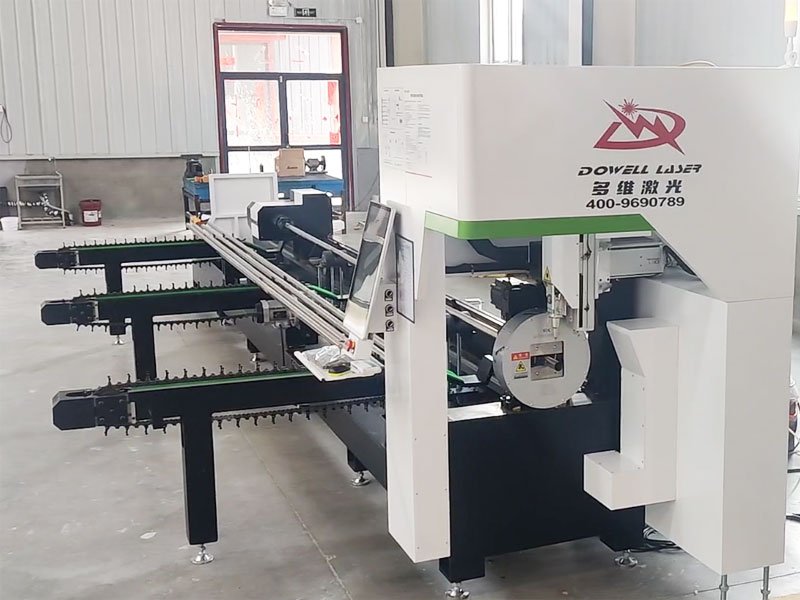I believe that many customers who have purchased a metal laser cutting machine should be familiar with laser cutting nozzles. The shape, diameter, and height of the nozzle (the distance between the nozzle exit and the surface of the workpiece), etc., will all affect the cutting effect. Let the editor come to popularize knowledge for everyone.

What are fiber laser nozzles
Fiber laser nozzles (called copper mouth)are an important part of the laser cutting head. The laser cutting nozzle is the interaction medium between the laser beam and the workpiece. It focuses the laser beam into a beam. The beam irradiates the surface of the workpiece in a certain direction and speed to form a slit. . This forms laser cutting.
Laser cutting nozzle function
The function of the nozzle is to prevent pollutants such as slag and smoke from rebounding upward, thereby protecting the internal lens
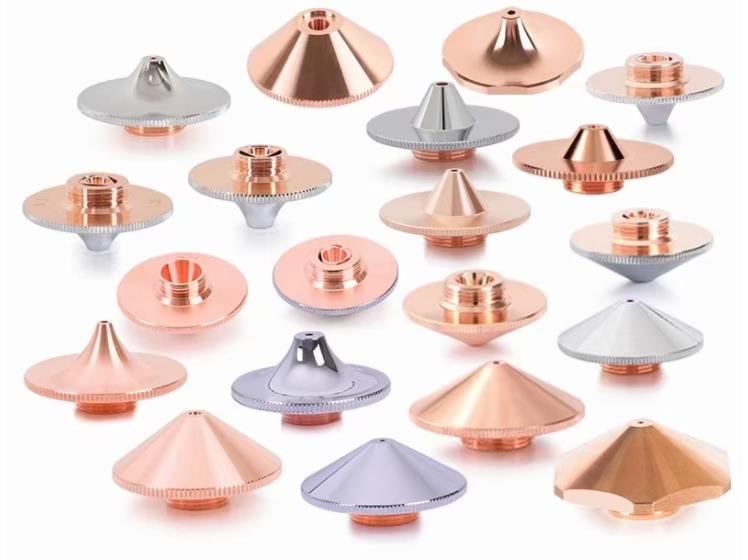
Laser cutting nozzle size
Nozzle aperture diameters include: 0.8, 1.0, 1.2, 1.5, 1.8, 2.0, 2.5, 3.0, 3.5, 4.0, 4.5, 5.0, etc.
The most commonly used ones are: 1.0, 1.2, 1.5, 2.0, 2.5, 3.0,
Among them, the three most commonly used ones are 1.0, 1.5, and 2.0.
Diameter:
The diameter of the nozzle is generally between 0.8-2.0mm. The smaller the diameter, the smoother the cut edge, but the cutting speed is relatively slow.
Length:
The length of the nozzle is generally between 15-25mm. The longer the length, the faster the gas injection speed and the cutting speed will increase, but the nozzle is easy to wear.

Laser nozzle types
Appearance division: Parallel, convergent and conical forms.
Nozzles are divided into single-layer and double-layer nozzles.
- Single-layer nozzles are generally used for cutting stainless steel plates, aluminum plates, and copper plates;
- Double-layer nozzles are generally used for cutting carbon steel plates;
Effect of nozzle hole size on laser cutting quality
When cutting with a small hole nozzle, the perforation is small, the slit is narrow, the gas diffusion area is small, and slag is not easy to hang in the corners, so it is suitable for cutting medium and thin plates;
Thick plate cutting requires a large-aperture nozzle to blow away the slag due to its large amount of slag, slow speed, and wide cutting slit.
When cutting with a large aperture, the probability of sparks from the molten material splashing into the nozzle is high, and the protective lens is easy to adhere to flying slag, and the life of the protective lens is shortened.
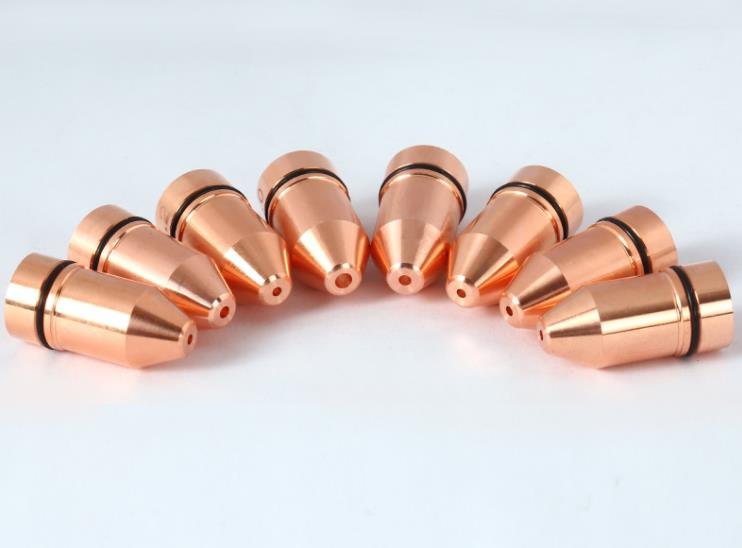
How to choose laser cutter nozzle selection
Cutting thin plates (below 3mm):
Generally, the hole diameter of the nozzle ranges from 0.8 to 1.5mm. The small nozzle hole diameter has a faster flow rate and will form a good cross-section. If a larger nozzle hole diameter is selected, the flow rate will be slower and slag will be formed on the back of the plate section.
Cutting in the medium thickness range (3mm-10mm):
Generally, a nozzle with an aperture of 1.5mm-3.0mm is selected. Although a smaller nozzle has a faster flow rate, insufficient flow will cause insufficient combustion. A larger nozzle with a too slow flow rate will also cause slag.
Cutting thick plates (larger than 10mm):
Generally, apertures of 2.5mm-5.0mm are selected. Thick plates have higher requirements for air flow, so a larger aperture is needed.
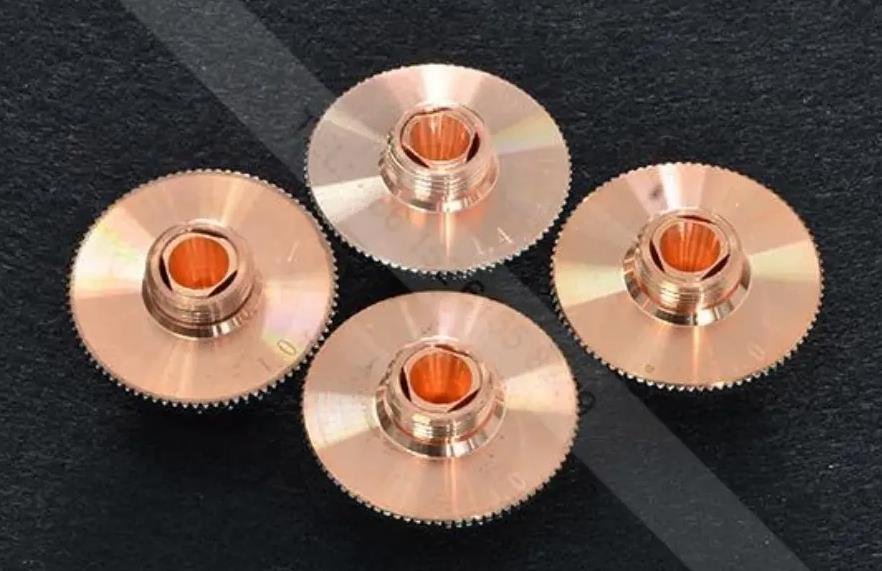
The influence of the laser cutter nozzle
The coaxiality between the nozzle outlet hole and the laser beam is one of the important factors that affect the quality of its grid.
The thicker the workpiece, when the nozzle is deformed or there is slag, it will directly affect the coaxiality. Therefore, the nozzle should be stored carefully to avoid damage to avoid deformation and clean up in time. The shape and size of the nozzle are manufactured with high precision, and the correct method should be paid attention to when installing.
If the nozzle and the laser have different axis, it will affect the cutting quality.
Effect on the cutting section When the auxiliary gas is blown out from the nozzle, the gas distribution is uneven, the right blowing volume is small, and the left blowing volume is large, resulting in slag on one side of the incision and no slag on the other side. When cutting thin plates below 3mm, its impact is small, when cutting more than 3mm, the impact is more serious, sometimes even unable to cut through.

The impact on sharp corners.
When the workpiece has sharp corners or the angle is small, overmelting is easy to occur, and the thick plate workpiece with sharp corners may not be cut.
The impact on perforation.
The perforation is unstable, the time is not easy to control, it will cause overmelting to the thick plate, and the penetration conditions are not easy to control, and the thin plate is less affected.
Nozzle diameter has a critical influence on cutting quality and perforation quality.
If the nozzle diameter is too large, the molten material splashing around during cutting may pass through the nozzle hole and splash the lens. The larger the diameter, the higher the probability of staining the lens, the worse the protection of the focusing lens, and the shorter the lens life.
The laser cutting nozzle size diameter also affects the cutting quality such as the size of the heat-affected zone and the width of the slit.
As the diameter of the nozzle increases, the heat-affected zone becomes narrower and the slit becomes wider. The commonly used nozzle diameter is 1-1.5mm.

Nozzle height refers to the distance between the lower end of the laser cutter nozzle and the surface of the workpiece. The nozzle height setting range is 0.5-4.0mm, and the common interval during cutting is 0.7-1.2mm.
Too low will cause the nozzle to easily collide and get the surface of the workpiece, and too high will reduce the solubility and pressure of the auxiliary gas, resulting in a decrease in cutting quality.
The height of the nozzle during punching is slightly higher than that during cutting, and it is set at 3.5-4mm, which can effectively prevent splashes generated during punching from contaminating the focusing lens.

Flow nozzle advantages and disadvantages
- Nozzle with a diameter of 0.8-1.0mm: the cutting speed is slow, but the cut edges are smooth, suitable for metal materials that require high cutting quality.
- Nozzle with a diameter of 1.2mm: The cutting speed is faster, but the cut edge is not as smooth as a nozzle with a smaller diameter.
- Nozzle with a diameter of 1.5mm: The cutting speed is faster, but the cut edges will be a little rough.
- Nozzle with a diameter of 2.0mm: the cutting speed is the fastest, but the cut edges are not smooth, so it is suitable for materials that require higher cutting speed.

